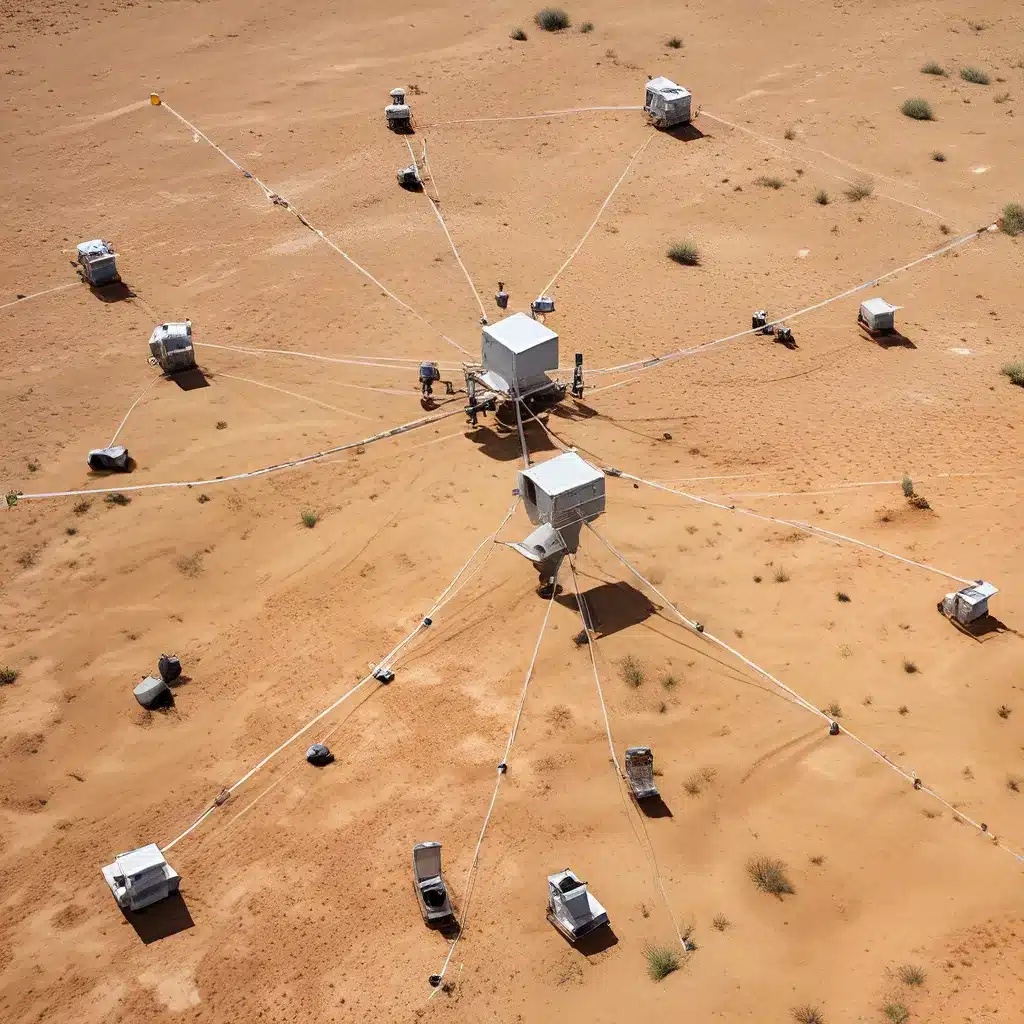
The Rise of Sensor Networks and IoT
Sensor networks have emerged as a transformative technology, enabling a vast array of applications across industries. From critical infrastructure monitoring to environmental data collection in remote or harsh environments, these distributed systems of interconnected sensor nodes have become indispensable. As the Internet of Things (IoT) continues to proliferate, the need for resilient and adaptable sensor network designs has never been greater.
Sensor networks operating in remote or harsh conditions face a unique set of challenges that require specialized algorithms and protocols. Factors such as limited power, harsh environmental conditions, and potential adversarial threats necessitate a holistic approach to ensure reliable and secure data acquisition, processing, and communication. Developers must navigate a complex landscape of energy-efficient routing, secure data transmission, and fault-tolerant architectures to create robust sensor network solutions.
Designing for Resilience: Key Considerations
When deploying sensor networks in demanding environments, several critical factors must be addressed to ensure resilience and reliability:
Energy Efficiency
Sensor nodes are often battery-powered and operate in regions with limited access to infrastructure support. Designing energy-efficient protocols and algorithms is paramount to maximizing the operational lifetime of the network. Techniques such as duty-cycling, data aggregation, and energy-aware routing can help conserve limited power resources.
Secure Communication
The wireless nature of sensor networks makes them vulnerable to various security threats, including eavesdropping, message tampering, and node compromise. Implementing robust encryption, authentication, and access control mechanisms is crucial to protecting sensitive data and ensuring the integrity of the network.
Fault Tolerance
Sensor networks operating in harsh environments are susceptible to node failures, communication disruptions, and environmental interference. Developing redundant and self-healing architectures, adaptive routing algorithms, and distributed consensus protocols can help the network withstand and recover from failures.
Scalability and Flexibility
As the scale and complexity of sensor network deployments continue to grow, the need for scalable and flexible solutions becomes increasingly important. Modular and reconfigurable designs, along with decentralized decision-making, can enable seamless expansion and adaptation to changing requirements and environmental conditions.
Distributed Algorithms for Resilient Sensor Networks
To address the unique challenges of sensor networks in remote and harsh environments, researchers have developed a suite of distributed algorithms and protocols that enhance resilience and reliability:
Secure and Efficient Data Routing
Distributed routing algorithms that incorporate security features and energy-efficiency considerations are crucial for ensuring the safe and reliable delivery of sensor data. These algorithms often leverage in-network processing, data aggregation, and multi-path routing to optimize energy consumption and mitigate security risks.
Adaptive Clock Synchronization
Precise time synchronization is essential for coordinating sensor node activities and enabling accurate data fusion. Distributed clock synchronization protocols that can adapt to changing environmental conditions and node failures help maintain temporal coherence within the sensor network.
Collaborative Intrusion Detection
Distributed intrusion detection systems (IDS) leveraging collaborative monitoring and anomaly detection can enhance the security posture of sensor networks. By sharing threat intelligence and coordinating defensive actions among nodes, these systems can identify and mitigate malicious activities in a decentralized manner.
Resilient Network Reconfiguration
In the face of node failures or environmental disruptions, sensor networks must possess the ability to dynamically reconfigure their topology and routing paths. Distributed algorithms for self-organization and load balancing can help the network adapt and maintain connectivity and data delivery capabilities.
Energy-Aware Data Collection
To extend the operational lifetime of sensor networks, distributed data collection algorithms can optimize energy consumption by adaptively scheduling node activities, prioritizing data, and leveraging energy harvesting techniques.
Sensor Networks in Action: Real-World Applications
Sensor networks equipped with these advanced distributed algorithms have found widespread adoption in a variety of real-world applications:
Critical Infrastructure Monitoring
Sensor nodes deployed across power grids, transportation systems, and water networks can continuously monitor for anomalies, security breaches, and environmental factors, enabling rapid response and proactive maintenance.
Environmental Observation and Conservation
Sensor networks in remote ecosystems, wilderness areas, and natural disaster zones collect invaluable data on weather patterns, wildlife behavior, and environmental changes, supporting scientific research and conservation efforts.
Industrial Process Optimization
Sensor-enabled smart factories and production facilities leverage real-time data to optimize production processes, improve quality control, and enhance energy efficiency.
Disaster Response and Emergency Management
Sensor networks in disaster-prone regions can detect and provide early warning of impending threats, enabling coordinated emergency response and disaster mitigation.
The Future of Resilient Sensor Networks
As the demand for sensor network deployments in challenging environments continues to grow, the need for advanced distributed algorithms that enhance resilience and reliability will become increasingly critical. Innovations in areas such as edge computing, energy harvesting, and self-healing architectures will further strengthen the capabilities of sensor networks, unlocking new possibilities for transformative applications and data-driven decision-making.
By embracing these distributed algorithms and resilient sensor network designs, we can unlock the full potential of IoT technologies, empowering us to monitor, protect, and optimize our world, even in the most demanding conditions. Visit sensor-networks.org to explore the latest developments and insights in this rapidly evolving field.